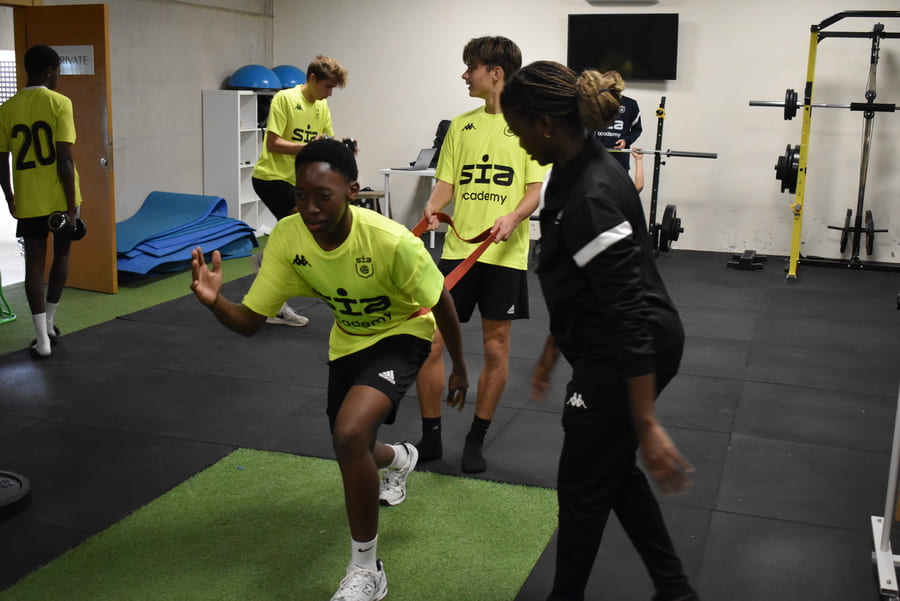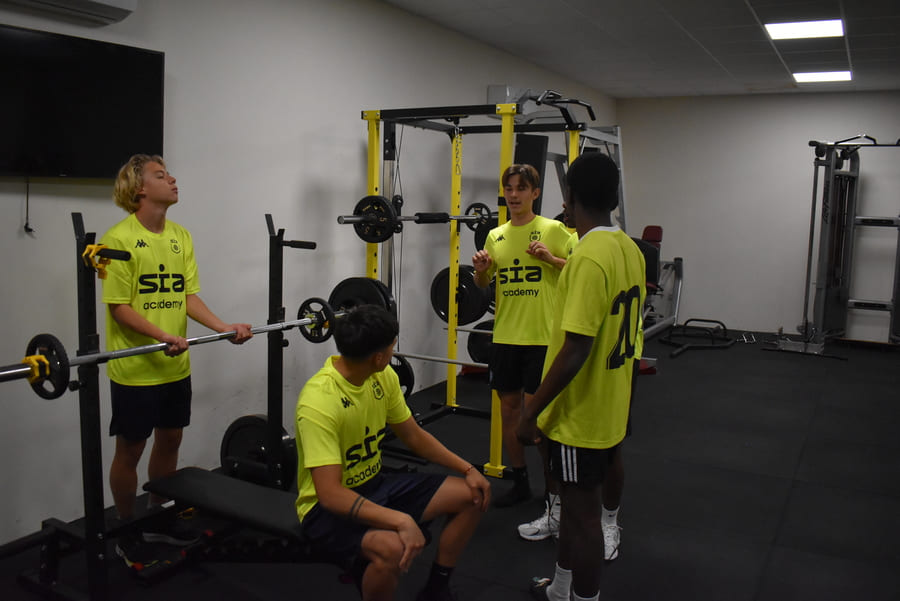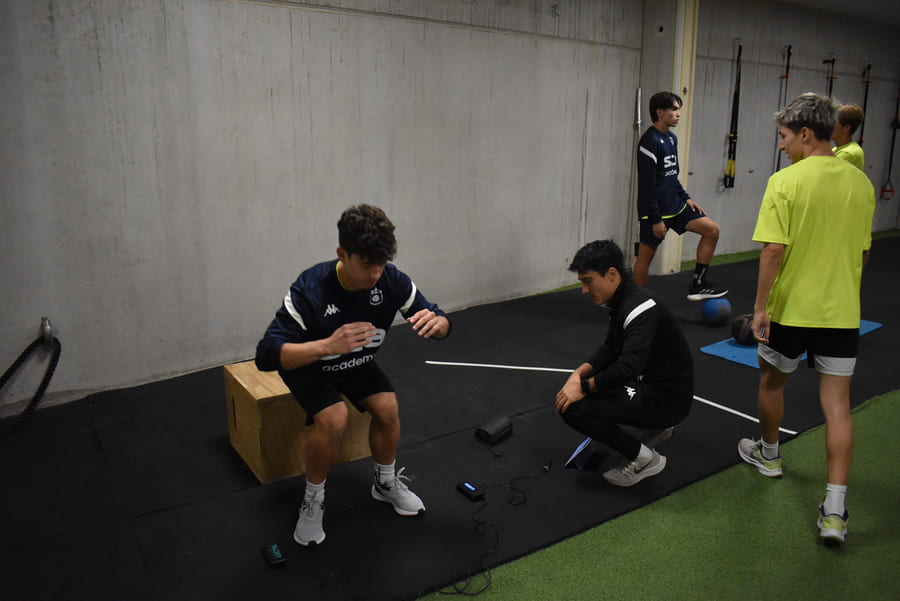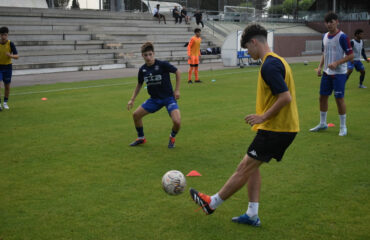Designing a complete physical routine for footballers is a task that goes far beyond running and lifting weights. In modern football, performance depends on smart training planning, personalization, and constant monitoring of the player’s progress. At SIA Academy, we turn this into a true science applied to sport, creating programs that develop strength, speed, and resilience with precision.
Table of contents
The importance of a structured routine
A well-designed training routine marks the difference between an average footballer and one who stands out for endurance, explosiveness, and the ability to maintain high performance for 90 minutes. According to Ximo, physical coach at SIA Academy, “without a schedule that combines physical, technical, and mental work, the player will never reach his full potential.”
In this sense, a well-structured program should not only focus on improving fitness but also on injury prevention, muscular balance, and recovery capacity. At SIA Academy, each player follows an individualized plan, adjusted to their age, position, and playing style.

Key components of a footballer’s routine
Every comprehensive training plan for footballers should be divided into specific blocks, each with a clear purpose in player development:
- Dynamic warm-up: before every session, the body must prepare for the workload. This block includes joint mobility, activation drills, and progressive runs. An effective warm-up phase significantly reduces the risk of muscle injuries.
- Functional strength work: it’s not about lifting the heaviest weight but strengthening the muscle groups used in football — quadriceps, hamstrings, glutes, core, and lower back. At SIA Academy, we emphasize multi-joint exercises and movement-based sessions such as squats, lunges, planks, and plyometric jumps.
- Endurance and aerobic power: the program should include high-intensity intervals (HIIT) to simulate game demands. Running 30-second sprints at top speed with controlled rest periods is one of our most used strategies.
- Speed and reaction drills: improving reaction time and acceleration in the first meters is essential. As Ximo explains, “in modern football, whoever reacts faster gains half a second that can decide the game.” Therefore, every session includes cone drills, directional changes, and visual or auditory stimuli.
- Mobility and recovery work: a complete schedule doesn’t end after training; proper recovery is vital. Stretching, flexibility drills, and cryotherapy sessions help maintain muscle freshness and prevent overload.
Adapting the plan to each stage of a footballer’s career
One of the most important principles we apply at SIA Academy is individualization. Not all footballers need the same kind of training plan. Younger players require a technical and coordination base, while adults focus on performance and sport-specific endurance.
For instance, a striker will follow sessions that emphasize explosive starts and sprints, while a midfielder needs a plan focused on endurance and maintaining intensity throughout the match.
At SIA Academy, we use advanced analysis and monitoring tools to adjust each program weekly according to performance data from training and matches. This way, progress is objectively measured, and overtraining is avoided.
The mental aspect in physical preparation
Although many associate training systems only with the body, at SIA Academy we also work on mental strength. Our physical coaches and sports psychologists collaborate to design methods that integrate focus, self-confidence, and stress management.
Ximo emphasizes that “consistency is the hardest muscle to train.” That’s why every training plan includes a motivational component that drives the player to stay disciplined even on low-energy days.

Technology and science applied to training
Technological innovation has transformed how we design each physical program. At SIA Academy, players use GPS devices, heart rate monitors, and load analysis software to control intensity and recovery after every session.
All this data is integrated into a digital system that helps us personalize each schedule, adjusting the workload according to the player’s physical condition. If fatigue or overload signs appear, we immediately adapt the training plan to prevent injuries.
Tips to create your own football training plan
If you’re a footballer looking to design your own comprehensive training structure, consider these tips inspired by our methodology:
- Define your goals: strength, speed, endurance, or balance.
- Plan your week with specific days: three for strength, two for endurance, one for mobility, and one for active recovery.
- Track your progress: keep a record of your loads, times, and recovery.
- Don’t neglect nutrition or sleep; both are crucial parts of any fitness system.
- Listen to your body: pain is a signal, not a challenge.
The routine as the key to success
A well-built routine not only improves performance but becomes part of a disciplined player’s DNA. At SIA Academy, every footballer learns that following a consistent program isn’t monotony — it’s the constant path toward excellence.
As Ximo says, “success doesn’t happen by chance; it comes because the player repeats his process day after day with the same passion.”
Ultimately, a complete physical plan is the foundation on which every elite footballer is built. At SIA Academy, we’ve created the perfect environment to nurture that culture of effort, science, and consistency that leads to sporting success.






